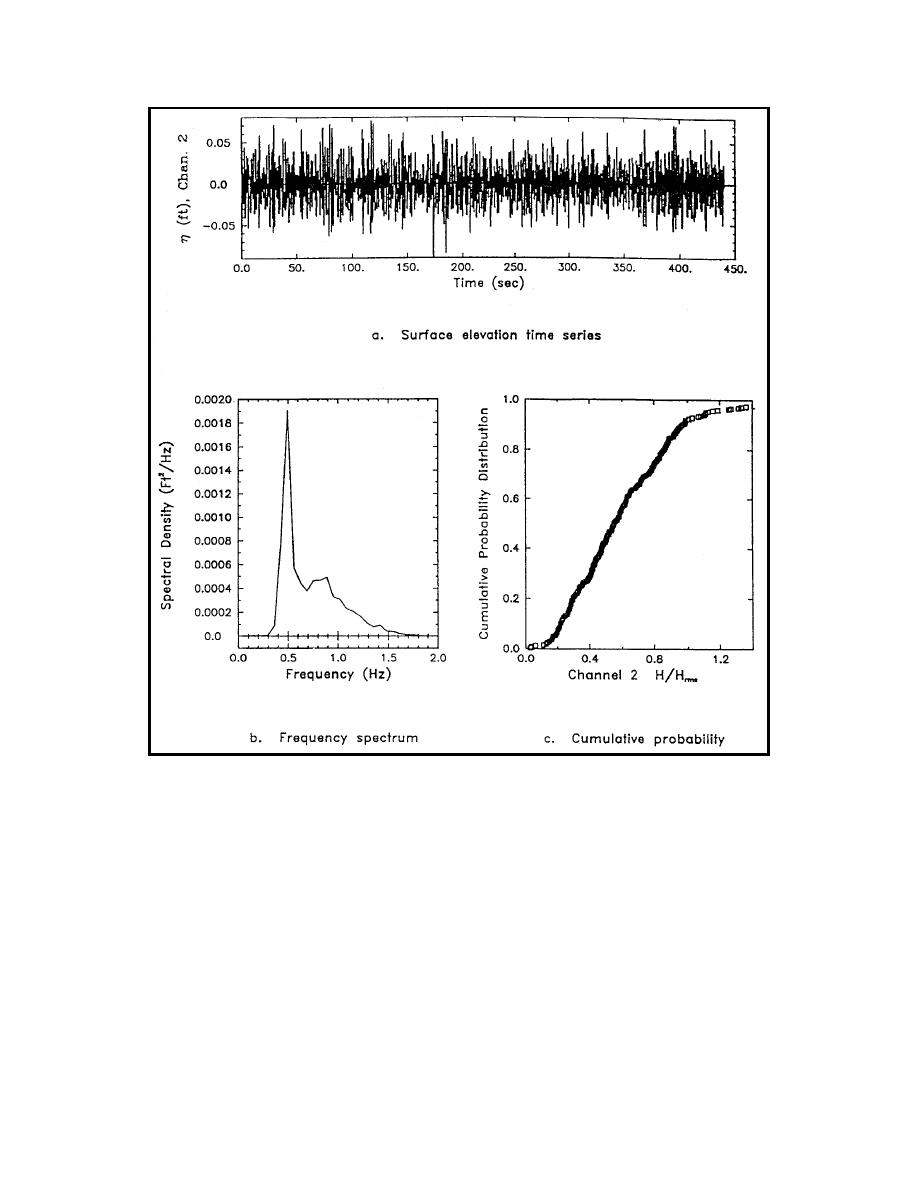
EM 1110-2-1100 (Part II)
30 Apr 02
Figure II-1-32. Surface elevation time series of an irregular wave and its spectrum (Briggs et al.
1993)
(2) Description of wave spectral analysis.
(a) Unlike the wave train or wave-by-wave analysis, the spectral analysis method determines the
distribution of wave energy and average statistics for each wave frequency by converting time series of the
wave record into a wave spectrum. This is essentially a transformation from time-domain to the frequency-
domain, and is accomplished most conveniently using a mathematical tool known as the Fast Fourier
Transform (FFT) technique (Cooley and Tukey 1965). Here we will treat analysis of the time recording ofthe
surface at a point, in order to obtain a frequency spectrum of the record. In a later section, we will describe
how to obtain a frequency-directional spectrum.
(b) The wave energy spectral density E(f) or simply the wave spectrum may be obtained directly from
a continuous time series of the surface η(t) with the aid of the Fourier analysis. Using a Fourier analysis, the
II-1-80
Water Wave Mechanics


 Previous Page
Previous Page
